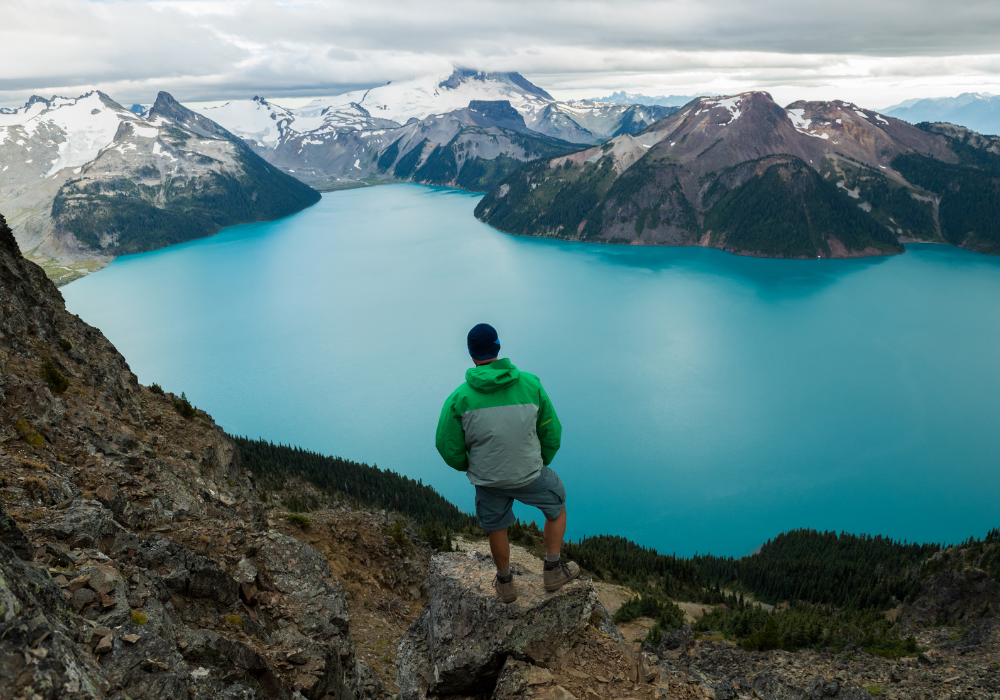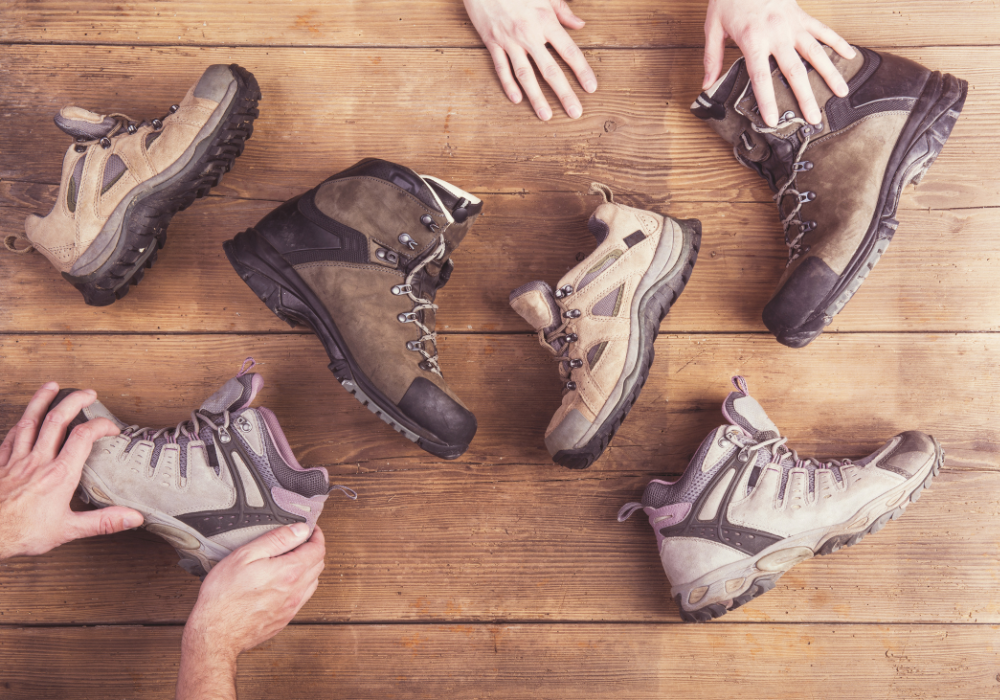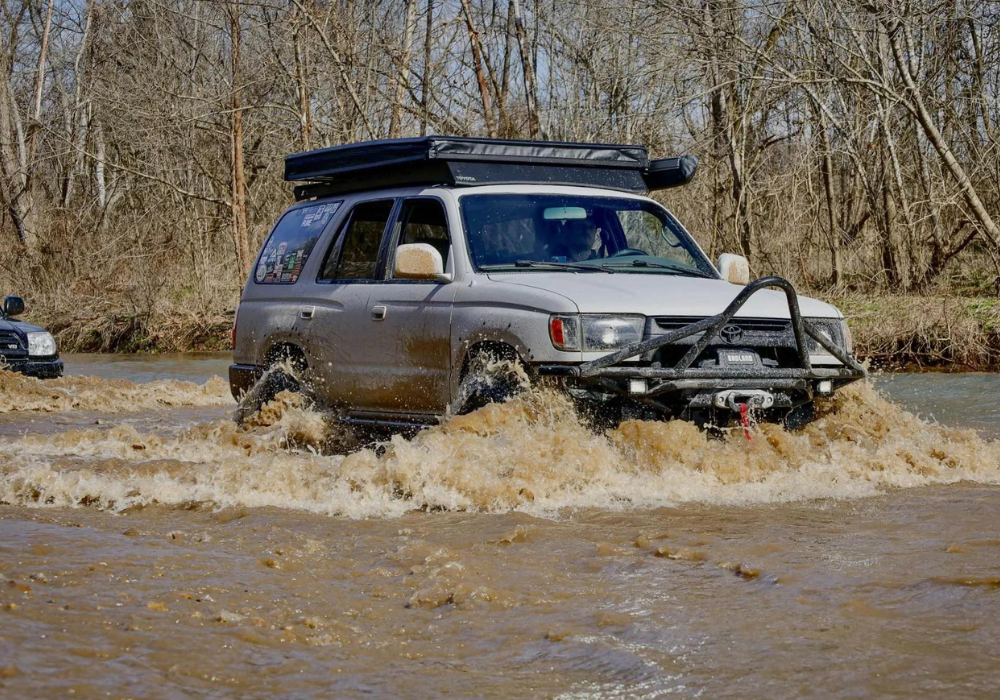
7 Best US Mountain Ranges For Adventure
Estimated reading time: 9 minutes
There are several mountain ranges in the us.
While they are pretty from a distance they’re also awesome when it comes to outdoor adventure.
If you’re looking for a more challenging adventure destination.
Go on a mountain trip!
Taking a day hike through a famous trail, camping on a deserted island overnight, or roughing it out in the backcountry over the weekend can be rough but there’s nothing quite as challenging as an adventure in the mountains.
The rugged terrain that can shred through hiking shoes, ever-changing weather that keeps you on your toes, and scarcity (or lack) of adequate facilities you’d normally find in other adventure sites are common fair when it comes to mountain adventures.
If this sounds like your cup of tea, then go ahead and start planning your mountain adventure.
Table of Contents
Great Mountain Adventures in the United States
You don’t even need to look outside of the United States if you’re looking for the best mountain ranges for your mountain adventure.
Below we’ve listed our top 4 picks complete with everything you need to know to get your mountain adventure going.
1. Blue Ridge Mountain Range: Highest Point of the Appalachians

You’ve probably heard about this mountain range sung by John Denver.
The Blue Ridge Mountains are located in the eastern United States, extending 550 miles southwest from southern Pennsylvania through Maryland, West Virginia, Virginia, North Carolina, South Carolina, Tennessee, and Georgia. This mountain range got its name from its bluish color when seen from a distance. The bluish tinge and haze are caused by its trees releasing isoprene into the atmosphere.
While the Blue Ridge Mountains is a province spanning across several other mountain ranges including the Ridge and Valley arena, the Great Smoky Mountains, the Great Balsams, the Roans, the Blacks, and the Brushy Mountains, the name “Blue Ridge Mountains” usually refers to the front-facing eastern side of the Appalachians. This mountain range contains the Appalachian’s highest point at Mt. Mitchell in North Carolina at 6,684 feet (2,037 m).
This mountain range is most known for its heavily forested terrain and rugged hiking trails. These trails traverse the range’s temperate forest biome. The various trees in the area include pine trees, spruce, birch, and maple trees which make up homes for animals such as squirrels, cottontail rabbits, white-tailed deer, wolves, beavers, black bears, and the red-tailed hawk.
There are lots of activities you can do in the Blue Ridge Mountains so there’s simply no room for boring adventures.
You can explore the waterfalls at Fall Branch Falls and Long Branch Falls. For a more out-f-the-ordinary experience, you can try the Georgia Mountain Coaster located at Helen, Georgia. Or you can challenge yourself to hike to the highest peak east of the Mississippi River, Mt. Mitchell.
Whatever you choose to do on your adventure, the best time to visit is from spring to fall when the weather is most pleasant and there’s the least chance of road closures compared to the winter months.
2. Rocky Mountains: World’s Second Longest Mountain Range

When you ask someone to think of a mountain, odds are they’re going to answer with this mountain range’s name.
Also known as “The Rockies“, stretching over 3,000 miles north-to-south from New Mexico, Colorado, Wyoming, Montana, to Idaho in the United States through Alberta and British Columbia in Canada. It forms the longest mountain range in North America and the second-longest mountain range in the world (with the mid-ocean ridge taking the title). The Rockies’ highest point, Mt. Elbert rises a staggering 14,440 feet above sea level.
The Rocky Mountains cover many different altitudes and, cannot be said to consist of just one biome.
The trees making their home in the Rockies include pinyon pines/junipers, ponderosa pines, oaks, Douglas firs, Cascadian species (such as western hemlock), lodgepole pines/quaking aspens, spruce, or white pines (such as whitebark pine or bristlecone pine).
Making their home in the range’s diverse biotic zones are a great deal of well-known wildlife, such as elk, moose, mule deer, white-tailed deer, pronghorn, mountain goats, bighorn sheep, badgers, black bears, grizzly bears, coyotes, lynxes, cougars, wolves, and wolverines. North America’s largest moose herds can be found in the Alberta–British Columbia foothills forests.
With hundreds of miles of trails, the Rockies are a great spot for mountain hiking. With so many local wildlife calling the range their home, don’t be surprised to encounter a critter or two. The Rocky Mountains are most well-known for their scenic views and you’ll certainly find a lot of those while adventuring there.
Whatever fun activity you choose, the best time to visit is around June to September when most of the snow has melted and the hiking trails and attractions are more accessible.
Be sure to include a stop at Rocky Mountain National Park on your next road trip.
3. Sierra Nevada Mountain Range: Home of Giant Sequoias

The Sierra Nevada Mountains, also called Sierra Nevadas, is a major mountain range of western North America, running north-to-south along the west coast of the United States along the eastern edge of California. While the Carson Range spur lies primarily in Nevada, the rest of its mass lies mostly in the state of California. The range spans 400 miles long and 70 miles wide, with its highest point at 14,505 feet on Mt. Whitney, the tallest mountain in the lower 48 United States.
The Sierra Nevadas are home to the largest trees in the world, the giant sequoia trees, that can grow up to 270 feet tall and over 25 feet in diameter. Some of these trees are over 3,000 years old and still living.
There’s never a lack of things to do while you’re in the Sierra Nevadas, but one place you should visit at least once is Yosemite National Park.
You can go on small bike tours or private hiking tours to take in nature’s stunning scenic views. Maybe go on a day trip excursion to steep yourself in the flora and fauna or discover the local towns. If you want to learn hiking in snowshoes, Sierra Nevada is a good place for some practice.
If you’re going trekking and biking, the best time to visit the Sierra Nevadas is between May and June which will let you summit the park’s two highest peaks, the 3,396-metre (11,142-foot) Veleta and the 3,478-metre (11,411-foot) Mulhacén.
4. Great Smoky Mountains: Home of the Most Visited National Park in the US

The Great Smoky Mountains, also called The Great Smokies, are a mountain range running along the Tennessee–North Carolina border in the southeastern United States. This mountain range is a subrange of the Appalachian Mountains and forms part of the Blue Ridge Physiographic Province and spans about 800 square miles.
If you haven’t been before, I highly recommend visiting the Great Smoky Mountains National Park.
The Great Smokies got their name from the natural fog (caused by the vegetation emitting volatile organic compounds) that can usually be seen hanging over the range and looks like large smoke plumes from a distance.
Since most of the mountain range is protected by the Great Smoky Mountains National Park (with over 12.1 million visits), most of the activities you can do are available in the park itself.
For instance, you can drive up to Clingmans Dome via the scenic access road where you can then walk half a mile to the summit and check out the spaceship-like observation tower at the top. You can also enjoy some paddleboarding, kayaking, or angling in Fontana Lake’s 240 miles of shoreline. Or head on to Oconaluftee to tour the Mountain Farm Museum for a glimpse at how early settlers lived back in the early 1800s.
It’s best to visit the Great Smoky Mountains in the summer (June, July, and August) and the fall.
5. The Cascades

The Cascades aren’t talked about too much – at least not in my circles. But there is some epic adventure to be had here.
North Cascades National Park was an awesome place to roam around.
It is a vast wilderness of conifer-clad mountains, glaciers, and lakes. The North Cascades Highway passes viewpoints and leads to trails such as the steep Thunder Creek Trail. Boats dot Ross Lake
Highly recommend.
6. The San Juans

Hunting, horseback riding, hiking, camping, backpacking, snowmobiling – you name it. The San Juan mountain range has it all.
The San Juan range forms the southern part of Colorado’s Rocky Mountains and has some of the best, most dynamic scenery.
Spanning the continental divide, it has several jagged volcanic summits, 13 of which rise above 14,000 feet.
There are many lakes, waterfalls and streams including the source of the Rio Grande.
Several historic towns and countless relics from the gold and silver mining era of the nineteenth century remain, the latter reflecting the extensive mineralization of the range, as evident from the vivid colors of many of the rocks.
7. The Wasatch

This is one of my favorite places to hunt. Low foot traffic, plenty of wildlife, and incredibly quiet.
There are lakes, rivers, trails and backcountry to explore.
And if you decide to visit, don’t forget to visit Great Basin National Park while you’re there.
More Adventure Related Reading:
10 Greatest USA National Parks For Hiking
10 Reasons Why The AdventureHacks Online Camping Store Is For You
8 Of the Best Places for Outdoor Family Adventure
Questions to Entertain Your Kids While On Adventures
An Adventurers Top 20 Essential Travel Items
Like This Article On The Best US Mountain Ranges For Adventure?
Please consider sharing Telegram & Twitter.
To your next adventure!
-David





Pingback: Top 10 Outdoor Adventures In Ohio - AdventureHacks
Pingback: 7 Epic Hiking Trails In 7 Amazing US National Parks - AdventureHacks